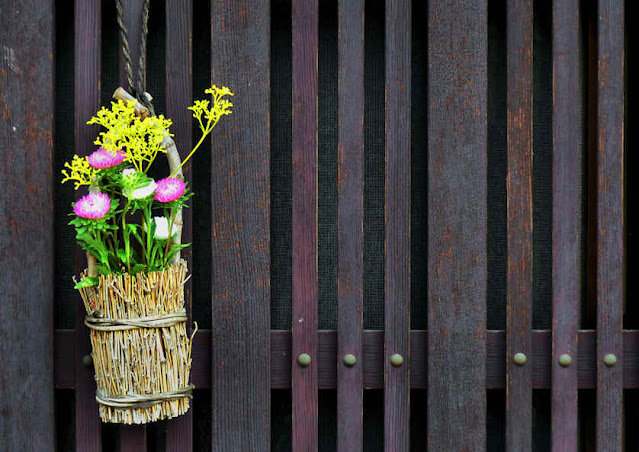Yabusame, a Japanese form of horseback archery, is, like some other "sports" in Japan considered an entertainment for the gods and is therfore found associated with shrines.
Yabusame can be seen at various places around Japan, but only in Tsuwano is it performed in a traditional yabusame grounds.
Part of Washibara Hachimangu Shrine at the base of the mountain where Tsuwano castle was built, the grounds were constructed about 500 years ago and was modelled on the yabusame grounds that existed then in Kamakura.
The shrine is older and dates back to the 13th century, but it was rebuilt in the mid 16th century by the daimyo Yoshimi Masayori.
The yabusame festival takes place on the first Sunday in April and so is usually during peak Cherry Blossom season.
Photographers arrive early to get the nmosr advantageous spots, but due to the remotemess of Tsuwano the event never gets as crowded as yabusame at other places.
On the Saturday before there are full rehearsals and these are open to the public.
The course is 250 meters long with a stone-lined embankment running down the center so that the riders can return up the opposite side.
The riders are all students of the Ogasawara School of Yabusame and include females and non-Japanese.
The second school of yabusame is the Takeda School.
Apparently all the horses come from Miyazaki and are not associated with one particular rider or owner.
As well as the riders, there is a massive cast of other participants ranging from young boys and maidens up to quite old men.
Some of the participants are connected to the shrine rituals and other are dressed in samurai costime.
Rituals take place in and in front of the shrine itself and then other rituals take place at the grounds.
Three of the mounted riders are dressed in traditional hunting outfits that include deerskin chaps.
They carry sharp hunting arrows. As I understand it these riders do not take part in the actual galloping and shooting.
Twelve riders wear the yabusame outfit which is much lighter.
Their arrows, used in the ritual, are not sharp but rather have a heavy, rounded, turnip-shaped head.
The target is a small wooden rectangle called a mato. If struck by an arrow they make a distinctive sound easily heard by the spectators who will then cheer.
Because the head of the arrow is quite heavy the target usually breaks.
There are three targets down the length of the course.
Originally the horses in Japan were much smaller than today, so in ancient times it would take about 30 seconds to complete the course.
Nowadays the time is almost half that.
The archery takes place in the morning and again in the afternoon.
I would reccomend arriving early to experience the full range of rituals and preparations.
Entry is free but you can buy a reservation for a ground cushion seat





























































































